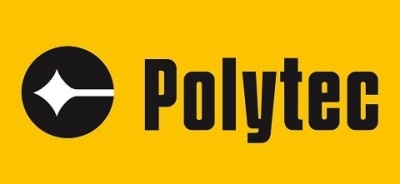In November 2011, NASA’s Jet Propulsion Laboratory (JPL) sent the Mars Science Laboratory rover called “Curiosity” to find out whether Mars had, or still has, an environment to support life. The unmanned rover will act as a robot geologist, acquiring information about the atmosphere, geology, environmental conditions on the surface of Mars, as well as the potential biosignatures on the red planet.
This article shows how NASA’s JPL scientists validated the dynamic response of the spectrometer inlet funnels on the rover using the Polytec PSV-400-3D Scanning Laser Vibrometer.
Curiosity will collect environmental and soil samplesin situ并利用光谱仪,相机,辐射探测器,大气传感器和环境传感器来研究位置样品。获得的数据将发送给NASA研究人员进行进一步的分析和解释。
防止机器人漫游者的污染至关重要,以便其数据收集和分析过程产生准确的结果。因此,对飞行和工程模型进行了分别测试,以确认流动站上各种系统的设计要求。
.jpg)
Figure 1.土壤样品的入口。
用于MARS仪器套件(SAM)和化学和矿物学/ X射线衍射/ X射线荧光仪器(Chemin)的MARS仪器套件(SAM)的样品分析的入口(图1)(Chemin)利用漏斗底部的压电驱动的执行器来摇晃和筛选来自火星表面的土壤样品进入光谱仪进行分析。
不准确的数据是由先前使用加速度计测试的模型产生的。这是由于将换能器连接到测试文章并限制可能的测量位置的质量负载效应。JPL科学家开发了一种非接触,动态性能测试方法,以确定用于设计验证的光谱仪入口漏斗的振动水平。
实验设置
During the validation process, the first step is to dynamically characterize the engineering models (Figure 2) that have been shown to effectively move the soil通过the funnel. This data can then be compared to the predicted results from the Finite Element Model (FEM) by characterizing the vibration levels at numerous locations on the inlet funnel. This information provides a benchmark that can be compared later with the measurements on the flight model which otherwise cannot be tested with soil.
.jpg)
图2。Engineering model of the sample funnel.
然后,使用10.5 kHz - 12.5 kHz在Chemin的时间内使用10.5 kHz - 12.5 kHz扫描,对执行器进行了激发测试,用于SAM的时间15秒(图3)(图3)。三个执行器中的每一个都必须分别进行测试,然后在两个执行器组成的团队中共同进行激动,这三个执行器令人兴奋。使用Polytec PSV-400-3D来确定工程模型上三维(3D)的振动,而该振动又以多个位置定向,以启用从Polytec传感器头到的视线访问权限Chemin入口(内部和外部),SAM入口,Chemin Collection屏幕和Chemin漏斗。除了收集屏幕和漏斗上的一些位置外,测量位置还包括入口上约20至30个测量点。接下来,如图4所示,在每个测量位置的X,Y和Z方向上获得了对扫描输入响应的时间历史数据。
.jpg)
图3。Vibration analysis of the engineering model
.jpg)
Figure 4.Frequency response of the model in X, Y, and Z directions
The flight hardware, comprising of the CheMin and SAM instruments, had to be compared to the engineering models tested so as to validate its functionality. The CheMin and SAM instruments are installed on the Mars-bound rover, which is then assembled in a clean room called the Spacecraft Assembly Facility (SAF). In order to prevent damage to the rover and any of its components, access was restricted to 1 m away from the rover. Then, the Polytec PSV-400-3D was completely cleaned and brought into the SAF, and then placed at a distance of 1.5 m away in front of the rover with a direct line of sight to the SAM and CheMin inlets, as shown in Figure 5. Measurements were then recorded using the same excitation and acquisition settings from the engineering model tests on the inside and outside rim of the SAM and CheMin inlets.
.jpg)
Figure 5.在路虎上安装的入口上的振动测量。
Results and Conclusion
JPL analyzed the data by low-pass filtering the time history data and calculating the RMS velocity over one chirp for individual measurement location. The data obtained was then compared between the flight hardware and the engineering models. Test results revealed that the dynamic behavior of the flight model corresponded with that of the engineering model, increasing the scientists’ confidence about the functional performance characteristics of the inlet actuation system.

This information has been sourced, reviewed and adapted from materials provided by Polytec.
有关此消息来源的更多信息,请访问Polytec。